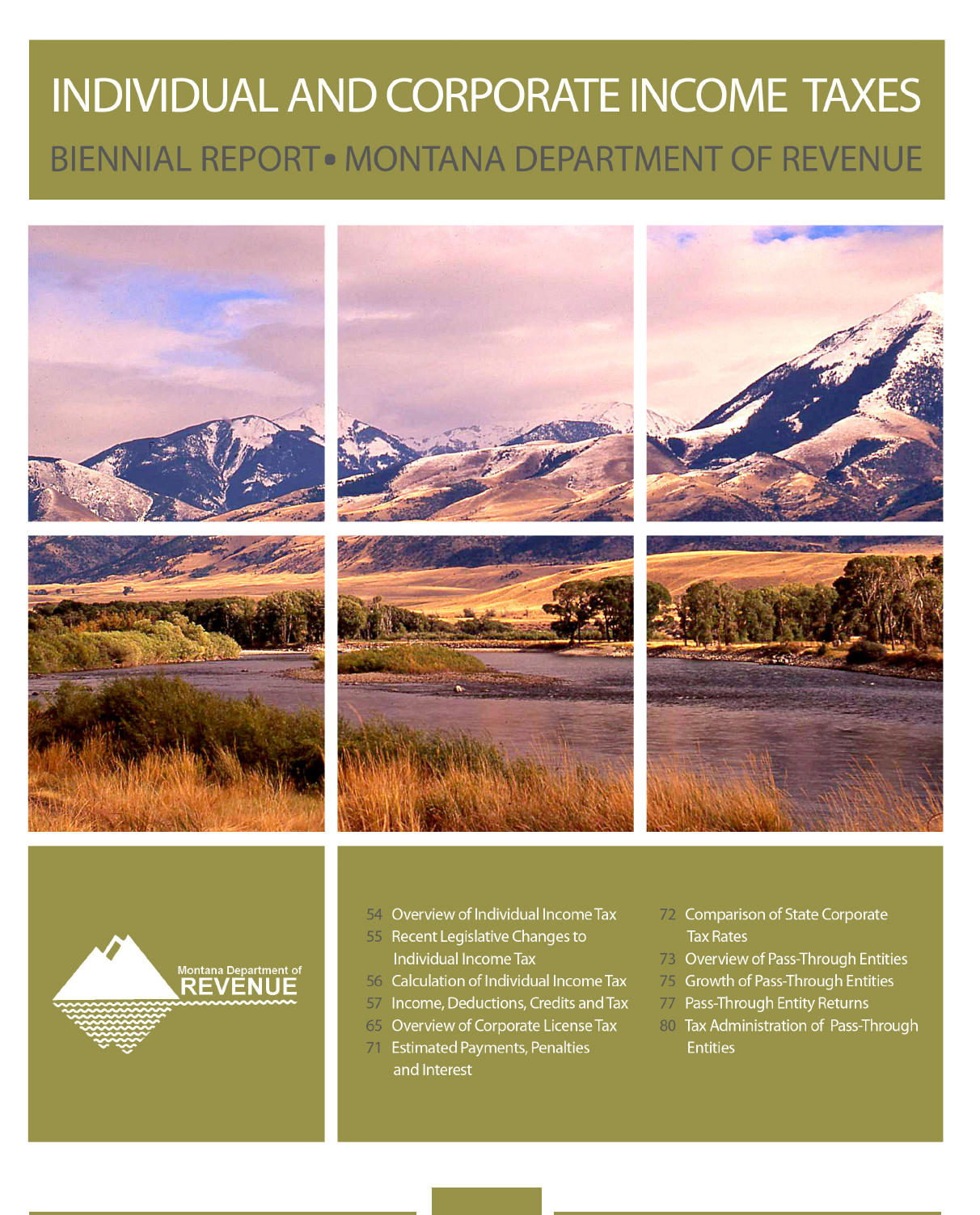
revenue.mt.gov
53

revenue.mt.gov
54
Montana’s individual income tax was enacted in 1933
and is the largest source of state tax revenue. The
state’s income tax has a graduated rate structure with
rates ranging from 1% to 6.9% of taxable income. This
makes it a “progressive” tax because taxpayers with
higher incomes pay a higher percentage of their income
in tax.
Like most of the 43 states with an income tax, Montana
has tied its income tax very closely to the federal income
tax. Montana law denes taxable income largely by ref-
erence to federal denitions of income and deductions,
and Montana income tax returns rely heavily on informa-
tion from federal income tax returns. This reduces the
department’s costs of administering the income tax and
taxpayers’ costs of complying with the income tax.
Montana’s income tax does differ from the federal in-
come tax in several ways, primarily in additions to and
reductions from federal adjusted gross income, unique
itemized deductions, and tax credits. Most of these dif-
ferences reect legislative policy decisions while a few
are due to federal limits on state taxation.
Individual Income Tax Collections
FY2004 $605,348,421
FY2005 $712,280,615
FY2006 $768,911,933
FY2007 $827,095,302
FY2008 $866,638,122
FY2009 $815,138,193
FY2010 $717,834,371
Montana is one of few states that allows a deduction
for federal income taxes, but the deduction is capped
at $5,000 ($10,000 for married couples ling jointly).
Montana also is one of few states that allows married
couples to le separate state returns even if they le a
joint federal return. This reduces household tax liability
and eliminates any “marriage penalty” at the state level.
Since 1981, Montana’s individual income tax – including
the standard deduction, personal exemptions, and tax
rate table brackets – has been adjusted annually for in-
ation. This prevents increases in tax liability that would
otherwise occur due simply to ination.
Income tax revenues are collected primarily through
employer withholding, quarterly estimated tax payments,
and payments made when a return is led. Income tax
revenues are distributed 100% to the state general fund.
605.35
712.28
768.91
827.10
866.64
815.14
717.83
0
100
200
300
400
500
600
700
800
900
1,000
FY2004
FY2005
FY2006
FY2007
FY2008
FY2009
FY2010
Millions
Individual Income Tax Collections
Income Tax Returns and Refunds
Timely Filed Current Year Returns
Calendar
Year
Returns
Returns
with
Refund
Percent
with
Refund
Average
Refund
1999 516,658 254,686 61% $351
2000 529,937 266,152 62% $376
2001 529,955 279,641 65% $413
2002 532,617 287,843 67% $415
2003 536,100 288,154 66% $405
2004 547,623 294,025 66% $468
2005 554,224 297,993 66% $491
2006 572,256 311,789 66% $464
2007 591,874 345,972 71% $506
2008 601,078 345,172 70% $598
2009 587,425 337,714 70% $545
Overview of Individual Income Tax

revenue.mt.gov
55
Recent Legislative Changes to Individual Income Tax
The following bills passed by the 2009 Legislature af-
fected the individual income tax:
House Bill 21 makes permanent the credit for a portion
of the cost of investment in property used to collect or
process reclaimable material and the extra deduction for
10% of a business’s costs of buying recycled material.
Previously, these tax incentives were set to expire at the
end of 2011.
House Bill 163 extended the sunset date for credits for
lm and television production in Montana from the end
of 2009 to the end of 2014.
House Bill 262 made changes to the credit for installing
an alternative energy system in the taxpayer’s principal
residence. It limited the credit to heating systems, and
it made masonry heaters and outdoor hydronic heaters
that meet certain standards eligible for the credit.
House Bill 315 requires that the partial exemption for
pension and annuity income be adjusted for ination
each year beginning in 2010.
House Bill 636 exempts part or all of the gain from sell-
ing a mobile home park to a tenants’ or residents’ as-
sociation, a non-prot that buys the park on behalf of the
residents, or a municipal or county housing authority.
For a park with 50 or fewer lots, the full gain is excluded
from income. For a park with more than 50 lots, half the
gain is excluded.
Senate Bill 135 makes one change to the Insure Mon-
tana credit for small businesses that begin providing
group health insurance for employees. Previously, an
employer was ineligible if any employee who was not a
part-owner was paid wages of more than $75,000 per
year. This bill prevents any part-owner of an eligible
business who is paid wages of more than $75,000 per
year from claiming the credit.
Senate Bill 181 requires proceeds from the sale or ex-
change of real estate to be reported to the Department
of Revenue whenever they are required to be reported
to the IRS on a Form 1099-S.
Senate Bill 260 allows publicly traded partnerships to
le annual information returns showing partners who
received Montana source income in lieu of the normal
requirement for a pass-through entity to either pay tax
on behalf of its owners or le a form showing that the
owners agree to pay tax themselves.
Senate Bill 418 increases the limit on income that a
person can earn and be claimed as another’s dependent
from $800 to the personal exemption amount. It also
allows a taxpayer who the IRS has relieved from liability
for their spouse’s understatement of tax liability to apply
to the department for the same relief.

revenue.mt.gov
56
Calculation of Individual Income Tax
Calculation of Montana individual income tax begins with
the taxpayer’s Federal Adjusted Gross Income.
Several adjustments are made to give Montana
Adjusted Gross Income:
• Income taxed by the state but exempted by the
federal government is added,
• Income exempted by the state but taxed by the
federal government is subtracted,
• Deposits to Montana tax-advantaged savings ac-
counts are subtracted,
• Taxable withdrawals from Montana tax-advan-
taged savings accounts are added,
• Net adjustments from ling a joint federal return
and separate state returns are added, and
• Recoveries of costs deducted in previous years
(primarily refunds of federal taxes previously
deducted) are subtracted.
The values of the taxpayer’s exemptions and either
itemized or standard deductions are subtracted to give
Montana Taxable Income. The value of exemptions
and maximum and minimum standard deductions are
adjusted for ination each year:
Tax liability is calculated from the rate table. The rate
table is adjusted for ination each year:
Tax Rate For 2008 Applies to Income Over but Not Over For 2009 Applies to Income Over but Not Over
1.0% $0 $2,600 $0 $2,600
2.0% $2,600 $4,600 $2,600 $4,500
3.0% $4,600 $7,000 $4,500 $6,900
4.0% $7,000 $9,500 $6,900 $9,300
5.0% $9,500 $12,200 $9,300 $12,000
6.0% $12,200 $15,600 $12,000 $15,400
6.9% $15,600 $15,400
Any credits the taxpayer may claim are subtracted from
the tax liability to give the net tax.
• Taxpayers with capital gains income are allowed
a credit equal to 2% of their capital gains. In ef-
fect, this taxes capital gains at a lower rate than
other income.
• Other credits generally are a percentage of a
certain type of qualifying expenditure the tax-
payer has made.
Exemption Amount $2,140 $2,110
Minimum Standard Deduction $1,780 $3,560 $1,750 $3,500
Maximum Standard Deduction $4,010 $8,020 $3,950 $7,900
Standard Deductions: 20% of Montana Adjusted Gross Income with Maximum and Minimum
Single and Separate
Returns
Joint
Returns
Single and Separate
Returns
Joint
Returns
Tax Year 2009Tax Year 2008

revenue.mt.gov
57
Income, Deductions, Credits, and Tax from 2008 and 2009 Returns
The next six tables show information about individual
line items on full year residents’ income tax returns for
2008 and 2009. For each line item, the table shows the
count of the number of returns with a value on that line
and the sum of those values.
2008 2009
Count Total Count Total
Income Items
Wage and salary income 431,012 13,352,105,062 421,862 13,136,979,081
Taxable interest income 274,368 674,052,607 251,993 519,760,266
Exempt interest income* 26,829 181,764,183 26,496 178,610,589
Ordinary dividend income 136,766 592,113,015 125,833 462,423,006
Qualified dividend income * 114,243 432,759,688 n/a n/a
Taxable refunds of state/local income taxes 103,259 101,843,624 100,555 113,741,795
Alimony received 839 12,216,684 832 12,834,607
Business income (Schedule C) 79,241 701,307,208 76,859 648,186,972
Capital gains income 114,334 1,337,809,696 94,436 912,040,530
Supplemental gains income 15,324 56,735,447 14,975 19,035,494
IRA distributions* 34,950 423,809,760 28,815 368,407,244
IRA distributions - Taxable amt 42,487 451,708,587 34,825 396,729,060
Pension and annuity income* 88,865 2,120,658,359 86,664 3,037,304,264
Pension and annuity income - Taxable amt 92,494 1,509,033,462 92,846 1,567,181,125
Rent, royalty, partnership, etc. income 95,986 1,735,147,210 95,190 1,508,400,268
Farm income 19,760 -210,130,661 19,326 -183,602,398
Unemployment compensation 31,654 102,993,388 33,542 174,819,293
Social Security Benefits* 104,002 1,509,624,382 105,371 1,646,131,586
Taxable social security benefits 63,579 527,626,179 63,158 540,620,199
Other income 49,494
-214,412,339 42,531 -326,314,130
Total income 537,508 20,730,149,169 528,318 19,502,835,168
* Indented items either are part of another line or include another line. They are not part of the total.
Federal Adjustments to Income
Educator Expense
11,075 2556940 11,230 2,641,663
Business expenses
588 1,624,564 582 1,447,975
Health Savings Account deduction
5,791 16,792,206 6,421 19,175,503
Moving expenses
3,126 4,722,743 2,587 3,547,466
One-half self-employment tax
61,780 74,863,322 59,832 70,605,043
Self-employed SEP, SIMPLE, and qual. plans
3,191 46,752,467 2,828 42,822,026
Self-employed health insurance deduction
21,303 102,338,278 20,351 98,936,900
Penalty on early withdrawal of savings
3,689 942,627 3,786 705,172
Alimony paid
1,186 13,387,308 1,162 13,843,756
IRA deduction
15,867 56,421,582 14,555 52,303,964
Student loan interest deduction
43,407 32,089,772 44,490 32,806,866
Tuition & fees deduction
14,602 34238086 6,872 15,216,928
Domestic production activities deduction
5,176 28,313,939 4,995 22,914,712
Federal write-ins
352
2,699,970 317 1,767,132
Total adjustments to income
142,736 417,743,804 136,576 378,735,106
Federal Adjusted Gross Income
537,530 20,312,405,365 528,328 19,124,100,062
Montana Individual Income Tax Income Reported on Full Year
Residents' Returns 2008 and 2009
-

revenue.mt.gov
58
2008 2009
Count Total Count Total
Montana Additions to Federal Adjusted Gross Income
Interest on other states' municipal bonds 17,321 94,380,505 17,681 92,212,666
Dividends not included in FAGI 155 221,776 441 702,870
Taxable federal refunds 90,034 122,652,586 83,066 122,976,647
Recoveries of amounts deducted in earlier years 833 468,721 285 973,921
Additions to federal taxable social security or railroad retirement 6,133 9,379,800 6,722 10,706,356
Allocation of compensation to spouse 611 9,563,306 482 7,202,972
Medical savings account nonqualified withdrawals 109 145,198 113 129,357
First-time homebuyer's account nonqualified withdrawals 8 35,384 14 29,691
Farm and ranch risk management account taxable distributions 1 200 1 697
Dependent care assistance credit adjustment 52 86,959 67 127,529
Smaller federal estate and trust taxable distributions 39 48,095 70 115,517
Federal net operating loss carryover 3,592 190,896,793 4,128 256,422,918
Federal taxes paid by your S. corporation 15 326,001 42 74,002
Title plant depreciation 0 0 2 3,548
Group health premiums reimbursed by Insure Montana credit 769 4,642,233 919 5,094,962
Other additions 7,371
99,710,548 4,922 113,864,663
Total Montana Additions 117,840 532,558,105 109,059 610,638,316
Montana Individual Income Tax Income Reported on Full Year Residents' Returns 2008 and 2009
Income, Deductions, Credits, and Tax from 2008 and 2009 Returns
2008 2009
Count Total Count Total
Montana Subtractions from Federal Adjusted Gross Income
Federal bonds exempt interest
28,534 51,862,384 23,963 37,421,242
Exempt tribal income
7,409 187,639,734 7,735 201,760,096
Exempt unemployment compensation
30,268 99,748,626 32,500 169,813,215
Exempt worker's comp benefits
77 400,335 204 1,006,241
Capital gains from small business investment companies
49 50,125 50 73,145
State tax refunds included in federal AGI
109,494 105,479,553 106,869 118,187,520
Recoveries of amounts deducted in earlier years
37 67,983 22 102,536
Exempt active duty military salary
4,142 131,691,515 4,297 142,046,880
Nonresident exempt military income
112 3,661,691 99 3,560,669
Exempt life insurance premiums reimbursement (National Guard)
126 447,340 41 441,796
Exempt pension income
42,005 134,023,768 41,280 132,876,584
Elderly interest exclusion
72,327 46,871,599 70,449 43,632,908
Exempt retirement disability income (under age 65)
91 369,876 155 656,765
Exempt tip income
11,142 31,562,631 13,348 38,921,676
Exempt income of child taxed to parent
145 251,424 44 99,782
Exempt health insurance premiums taxed to employee
283 1,127,728 160 644,902
Student loan repayments taxed to health care professional
102 294,799 134 370,976
Medical care savings account exempt deposits
7,524 16,967,593 7,425 17,483,938
First-time homebuyer exempt savings account deposits
196 538,398 254 710,124
Family education savings account exempt deposits
2,913 6,854,175 2,741 6,592,192
Farm and ranch risk management accounts exempt deposits
0 0 0 0
Subtraction to federal taxable social security/Tier 1 railroad retirement
31,901 104,252,490 32,847 113,084,380
Subtraction for federal taxable Tier II railroad retirement
3,054 35,527,084 3,025 36,473,121
Subtraction for spouse filing joint return: passive loss carryover
713 4,913,234 76 244,075
Subtraction for spouse filing joint return: capital loss adjustment
1,828 1,918,568 2,481 3,554,062
Allocation of compensation to spouse
611 9,564,024 502 7,418,488
Montana net operating loss carryover
3,397 177,036,342 3,867 242,163,391
40% capital gain exclusion on pre-1987 installment sales
626 2,813,975 250 1,124,567
Business expense of recycled material
72 179,028 115 136,675
Sales of land to beginning farmers
1 2,270 2 7,785
Larger federal estate and trust taxable distributions
153 311,890 110 264,183
Wage deduction reduced by federal targeted jobs credit
58 199,915 63 276,616
Certain gains recognized by liquidating corporation
13 399,697 5 29,686
Other subtractions
4,373
108,699,708 4,154 126,816,297
Total Montana Subtractions
246,009 1,265,729,502 243,960 1,447,996,513
Montana Individual Income Tax Income Reported on Full Year Residents' Returns 2008 and 2009
-
-

revenue.mt.gov
59
2008 2009
Count Total Count Total
Deductions
Total medical expenses* 134,614 550,903,057 133,123 543,571,282
Deductible medical expenses 71,687 309,033,065 73,337 307,848,323
Medical insurance premiums not deducted elsewhere 102,280 328,606,170 103,054 345,055,072
Long-term care insurance premiums 13,640 26,552,393 13,264 26,195,277
Federal Income Tax
Federal income tax withheld* 249,756 1,439,217,079 250,431 1,325,630,593
Federal income tax estimated payments* 55,434 761,008,071 50,339 573,787,410
Last year's federal income tax paid (e.g. with return)* 68,313 360,705,773 52,432 280,037,049
Federal income tax from previous years* 5,147 22,571,910 4,094 36,809,791
Federal economic stimulus rebate 256,154 543,735,650 n/a n/a
Total federal income tax deduction (after $5,000 cap) 262,564 977,041,035 280,813 1,007,165,809
State or Local Sales Tax** n/a n/a 577 621,978
Local income taxes 132 104,485 228 208,407
Real estate taxes 209,253 375,863,167 211,054 390,523,795
Personal property taxes 169,593 54,112,119 164,852 53,773,266
Other deductible taxes 22,848 8,494,096 26,256 8,631,187
Home mortgage interest 161,357 1,151,150,074 160,899 1,114,955,415
Unreported home mortgage interest 5,940 18,043,825 6,296 17,628,247
Unreported points 18,254 5,619,416 22,619 7,701,339
Qualified mortage insurance premiums 11,577 12,656,499 17,371 21,264,234
Investment interest 9,061 49,397,642 8,395 31,368,971
Contributions by cash or check 171,569 434,698,282 169,596 424,565,892
Contributions other than cash or check 70,403 61,442,501 70,044 59,713,638
Carryover of contributions from previous years 2,567 34,852,686 2,750 26,683,941
Child and dependent care expenses 769 1,382,178 889 1,600,514
Casualty and theft losses 393 5,565,994 341 6,906,415
Business Expenses
Unreimbursed employee business expenses* 57,683 187,311,818 56,602 169,613,660
Other business expenses* 142,412 113,984,827 142,920 102,707,081
Total business expenses* 160,914 301,296,645 161,528 272,320,741
Net deductible unreimbursed business expenses 56,879 213,814,844 57,450 191,103,224
Political contributions 11,307 1,062,633 7,052 643,598
All other miscellaneous deductions not subject to 2% floor 2,396 7,969,789 2,175 17,170,824
Gambling losses 1,250
10,936,343 1,169 10,915,626
Total itemized deductions 304,346 4,088,399,236 308,304 4,072,251,370
Unallowed itemized deductions (due to income over threshold) 22,128
23,169,551 18,039 19,210,187
Allowable itemized deductions 304,346 4,065,229,685 308,304 4,053,041,183
Standard deductions 210,558
749,417,878 200,130 697,489,190
Total deductions 531,358 4,814,647,563 523,618 4,750,530,373
* Indented items either are part of another line or include another line. They are not part of the total.
**For 2008, deductible sales tax was reported on the income tax line. It was given its own line for 2009.
Montana Individual Income Tax Deductions Reported on Full Year Residents' Returns 2008 and 2009
Income, Deductions, Credits, and Tax from 2008 and 2009 Returns
-

revenue.mt.gov
60
Income, Deductions, Credits, and Tax from 2008 and 2009 Returns
2008 2009
Count Total Count Total
Exemptions *
Self Exemption
n/a 488987
Self 65 and Over Exemption
n/a 87211
Self Blind Exemption
n/a 1270
Total Taxpayer Exemptions
493,793 582,020 488,992 577,468
Spouse Exemption
n/a 77,278
Spouse 65 and Over Exemption
n/a 31,804
Spouse Blind Exemption
n/a 360
Total Spouse Exemptions
83,285 103,539 87,637 109,442
Dependent Exemptions
132,201 233,053
132,230 234,714
Total Exemptions
493,794 918,613 488,992 921,624
Value of Exemptions
538,660 $2,065,590,060 529,582 $2,033,750,930
Taxable Income
Federal Adjusted Gross Income 537,530 $20,312,405,365 528,328 $19,124,100,062
+Montana Additions 117,840 $532,558,105 109,059 $610,638,316
-Montana Subtractions 246,009 $1,265,729,502 243,960 $1,447,996,513
-Deductions 531,358 $4,814,647,563 523,618 $4,750,530,373
-Value of Exemptions 538,660
$2,065,590,060 529,582 $2,033,750,930
Montana Taxable Income 444,818 $13,848,799,301 430,879 $12,823,448,468
Tax from Tax Table 444,077 $767,801,378 430,142 $705,718,484
Capital Gains Credit 51,631 $26,151,925 30,696 $17,974,296
Tax before Credits & Adjustments 440,443 $741,649,453 427,615 $687,744,188
Tax on Lump Sum Distributions 49 $17,166 39 $6,437
Recapture of Credits Claimed Previously 21 $22,472
25 $38,872
Total Tax $741,689,091 $687,789,497
Payments
Montana income tax withheld from wages
423,083 $602,973,245 413,663 $594,092,298
Tax withheld from mineral royalties
2,474 $6,173,658 2,656 $2,676,680
Tax withheld by pass-through entities
n/a n/a 100 $98,744
Estimated tax payments
50,898 $202,271,498 47,153 $156,234,826
Extension payments
4,421 $20,857,241 3,707 $25,498,836
Total Payments
$832,275,642 $778,601,384
Montana Individual Income Tax Exemptions, Taxable Income, Tax, and Payments Reported on Full
Year Residents's Returns 2008 and 2009
* Taxpayers claim exemptions for themselves and their spouses by checking boxes on the return. The counts for
exemptions show the number of returns where the taxpayer claimed at least one exemption for themself, their spouse,
or dependents. The totals column shows the number and type of exemptions claimed. For the taxpayer and spouse,
the totals column shows the numbers of basic exemptions and extra exemptions for being 65 or over or blind. For
2008, only the total number of taxpayer and spouse exemptions was recorded. For dependent exemptions, the count
is the number of returns claiming at least one dependent, and the total is the number of dependents claimed.

revenue.mt.gov
61
Income, Deductions, Credits, and Tax from 2008 and 2009 Returns
Montana Individual Income Tax Credits Reported on Full Year Residents' Returns 2008 and 2009
2008 2009
Count Total Count Total
Credits
Non-Refundable and No Carryover
Other states' income tax credit 10,735 20,931,634 9,765 16,975,208
College contribution tax credit 2,767 225,228 2,820 237,180
Qualified endowment tax credit 617 1,919,025 579 1,746,260
Energy conservation tax credit 23,656 7,853,727 28,594 9,998,955
Alternative fuel tax credit 45 27,402 55 38,175
Rural physician's tax credit 35 160,294 20 90,312
Insurance for uninsured Montanans credit
493 413,966 377 294,402
Elderly care tax credit 46 48,026 42 45,059
Recycling tax credit 77 527,908 85 439,254
Oil seed crushing/biodiesel facility credit <10 4,047 0 0
Biodiesel blending/storage tank credit <10 1,090 <10 2,630
Non-Refundable but with Carryover
Contractor's gross receipts tax credit 463 1,738,387 510 2,676,113
Geothermal systems tax credit 156 215,157 302 525,153
Alternative energy systems credit 1,804 997,615 2,321 1,302,796
Alternative energy production tax credit <10 8,315 15 33,086
Dependent care assistance credit <10 24,116 <10 7,769
Historic property preservation tax credit 18 60,116 23 134,543
Infrastructure user fee credit 16 30,372 12 27,699
Empowerment zone credit 0 0 0 0
Research activities tax credit 12 391,790 17 345,813
Mineral exploration tax credit <10 44,530 <10 7,749
Film production employment tax credit 0 0 0 0
Adoption credit 205 186,069 194 165,300
Total Non-Refundable Credits 39,108 35,808,814 43,357 35,093,456
Refundable Credits
Elderly homeowner/renter tax credit* 16,698 8,252,383 17,053 8,465,090
Film production employment tax credit 0 0 0 0
Film qualified expenditure tax credit <10 29,230 <10 19,047
Insure Montana small business health
insurance credit
792 2,380,374 911 2,513,344
Emergency lodging credit <10 396 0 0
Total Refundable Credits 13,806 8,901,758 14,497 9,311,534
Total Credits 69,252 66,387,531 75,430 63,883,305
* Credits claimed on tax returns. See the Property Tax section for credits claimed with no income tax return.
-
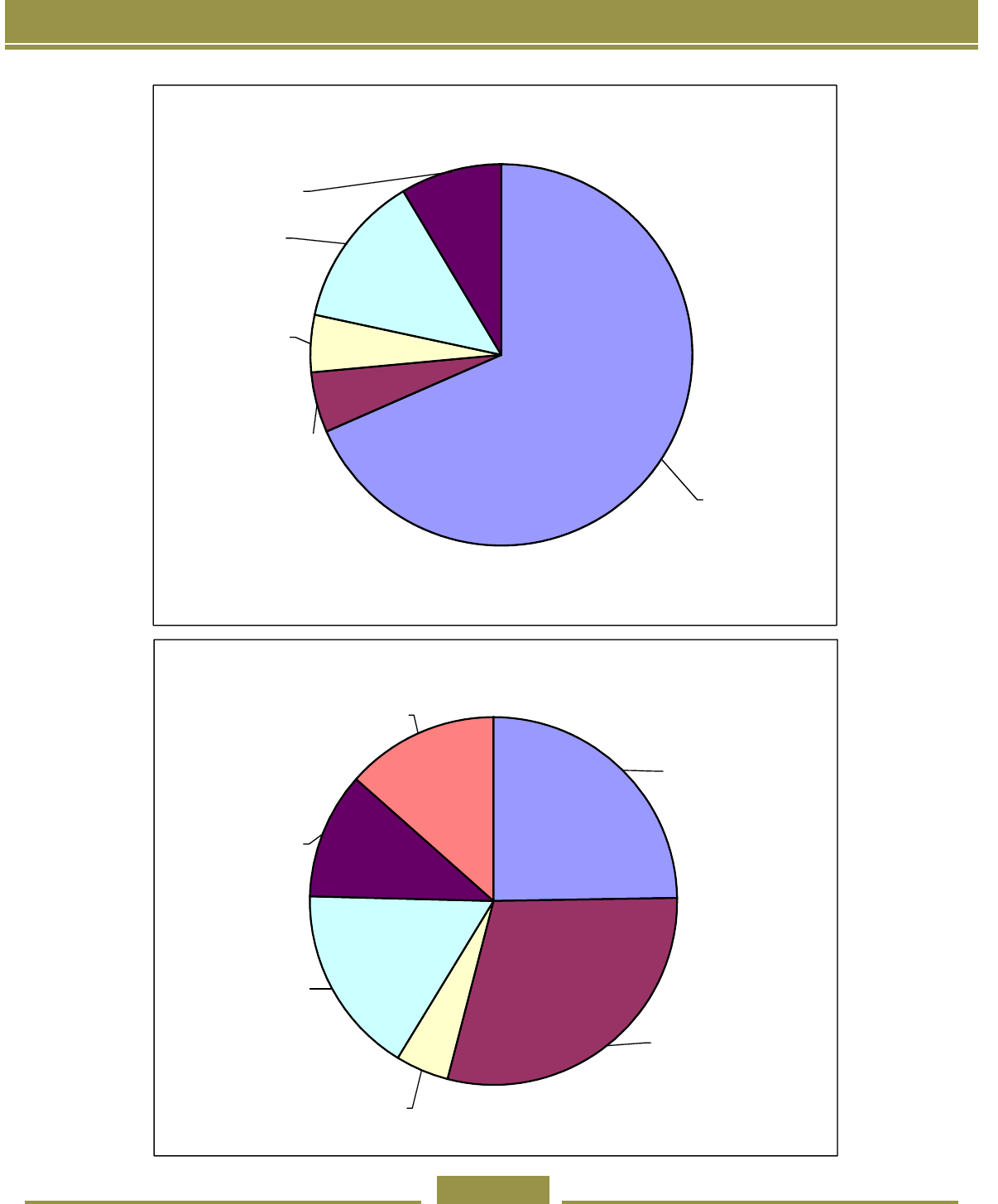
revenue.mt.gov
62
Federal Taxes
25%
Home Mortgage
Interest and Other
Interest
29%
Unreimbursed Business
Expenses
5%
Medical Expenses
17%
Property and Other
Taxes
11%
Contributions and Other
13%
Breakdown of Itemized Deductions - Tax Year 2009
Wages, Salaries, Tips
68%
Interest and Dividend
Income
5%
Capital Gain or Loss
and Supplemental
Gain or Loss
5%
Taxable Social
Security, IRAs,
Pensions, and
Annuities
12%
Business Income
(NBI; Rents,
Royalties,
Partnership: Farm;
Other)
9%
Breakdown of Income Sources - Tax Year 2009
Income, Deductions, Credits, and Tax from 2008 and 2009 Returns

revenue.mt.gov
63
The following tables show Montana adjusted gross
income, deductions, taxable income and tax liability by
decile group. Each decile group is 10% of the popula-
tion of returns, sorted by adjusted gross income. Group
1 is the 10% with the lowest incomes, while group 10
is the 10% with the highest incomes. In these tables, a
married couple who les separate returns on the same
form are counted as two returns, and their income and
tax is counted separately.
Decile
Group
Returns Income Range Returns Income Range
$ million % of total $ million % of total
1 53,870 less than $3,515 -$459.1 -2% 52,962 less than $3,147 -$582.2 -3%
2 53,870 $3,515 to $8,227 $316.0 2% 52,963 $3,147 to $7,822 $290.9 2%
3 53,870 $8,228 to $13,260 $577.3 3% 52,962 $7,823 to $12,724 $542.3 3%
4 53,870 $13,261 to $18,507 $854.5 4% 52,963 $12,725 to $17,963 $810.7 4%
5 53,870 $18,508 to $24,164 $1,146.3 6% 52,963 $17,964 to $23,599 $1,098.0 6%
6 53,870 $24,165 to $31,036 $1,479.8 8% 52,962 $23,600 to $30,408 $1,422.0 8%
7 53,870 $31,037 to $39,139 $1,882.6 10% 52,963 $30,409 to $38,529 $1,818.9 10%
8 53,870 $39,140 to $49,821 $2,378.5 12% 52,962 $38,530 to $49,303 $2,308.6 13%
9 53,870 $49,822 to $69,389 $3,130.9 16% 52,963 $49,304 to $68,155 $3,042.3 17%
10 53,870 more than $69,389 $8,272.2 42% 52,963 more than $68,155 $7,535.3 41%
All 538,700 $19,579.2 529,626 $18,286.7
Montana Adjusted
Gross Income
Montana Adjusted
Gross Income
Deciles of Montana Adjusted Gross Income Full Year Residents 2008 and 2009
2008 2009
Decile
Group
% Returns
Itemize
% Returns
Itemize
$ million average $ million average $ million average $ million average
1 28% $135.1 $8,837 $84.0 $2,177 34% $157.1 $8,831 $76.6 $2,177
2 26% $85.8 $6,026 $81.6 $2,060 28% $93.4 $6,332 $77.7 $2,032
3 37% $142.0 $7,064 $83.9 $2,483 38% $138.5 $6,880 $79.0 $2,406
4 43% $177.4 $7,694 $100.6 $3,263 44% $183.0 $7,863 $94.2 $3,172
5 46% $198.1 $8,030 $117.9 $4,037 47% $208.8 $8,345 $110.5 $3,954
6 56% $264.3 $8,832 $105.5 $4,405 57% $267.0 $8,884 $99.6 $4,348
7 71% $400.5 $10,475 $79.7 $5,099 72% $403.6 $10,525 $73.7 $5,041
8 84% $568.1 $12,541 $51.8 $6,044 85% $561.3 $12,476 $48.2 $6,049
9 91% $749.8 $15,355 $32.6 $6,478 92% $737.2 $15,175 $27.9 $6,372
10 97% $1,344.2 $25,840 $11.8 $6,402 97% $1,303.3 $25,373 $10.1 $6,338
All 58% $4,065.2 $11,607 $749.4 $3,301 59% $4,053.0 $11,598 $697.5 $3,239
Itemized Deductions
Standard Deductions
Deductions by Decile Group Full Year Residents 2008 and 2009
2008 2009
Itemized Deductions
Standard Deductions
Income, Deductions, Credits, and Tax from 2008 and 2009 Returns

revenue.mt.gov
64
Decile
Group
Itemized
Deductions
Standard
Deductions All
Itemized
Deductions
Standard
Deductions All
1 -37% -93% -48% -33% -70% -40%
2 99% 36% 53% 112% 37% 59%
3 65% 23% 39% 67% 24% 40%
4 48% 21% 33% 51% 21% 34%
5 38% 19% 28% 40% 19% 29%
6 32% 16% 25% 33% 16% 26%
7 30% 15% 26% 31% 15% 26%
8 28% 14% 26% 29% 14% 26%
9 26% 11% 25% 26% 11% 25%
10 17% 6% 16% 18% 6% 17%
All 26% 20% 25% 27% 21% 26%
Deductions as % of Montana Adjusted Gross Income Full Year Residents 2008 and 2009
2008 2009
Decile
Group
$ million Average % of Total $ million Average % of Total $ million Average % of Total $ million Average % of Total
1 $0.4 $7 0% $0.0 $0 0% $0.2 $3 0% $0.0 $0 0%
2 $72.2 $1,340 1% $0.8 $16 0% $59.6 $1,125 0% $0.7 $13 0%
3 $231.3 $4,293 2% $4.3 $79 1% $210.3 $3,971 2% $3.8 $72 1%
4 $421.6 $7,827 3% $11.0 $204 1% $387.2 $7,310 3% $9.9 $187 1%
5 $656.4 $12,184 5% $22.4 $416 3% $610.8 $11,533 5% $20.6 $388 3%
6 $929.6 $17,256 7% $39.0 $723 5% $877.4 $16,567 7% $36.4 $687 5%
7 $1,206.9 $22,404 9% $57.3 $1,063 7% $1,151.5 $21,742 9% $54.4 $1,027 8%
8 $1,552.1 $28,811 11% $80.7 $1,498 11% $1,495.6 $28,239 12% $77.6 $1,465 11%
9 $2,119.9 $39,352 15% $119.6 $2,221 16% $2,057.0 $38,839 16% $116.1 $2,192 16%
10 $6,658.5 $123,602 48% $432.7 $8,032 56% $5,973.9 $112,793 47% $386.3 $7,293 55%
All $13,848.8 $25,708 $767.8 $1,425 $12,823.4 $24,212 $705.7 $1,332
Taxable Income and Tax Full Year Residents 2008 and 2009
2008 2009
Taxable Income Tax Liability Taxable Income Tax Liability
Decile
Group
Montana Adjusted
Gross Income
Tax
Liability
Tax /
Income
Montana Adjusted
Gross Income
Tax
Liability
Tax /
Income
$ million $ million % $ million $ million %
1 -$459.1 $0.0 0.0% -$582.2 $0.0 0.0%
2 $316.0 $0.8 0.3% $290.9 $0.7 0.2%
3 $577.3 $4.3 0.7% $542.3 $3.8 0.7%
4 $854.5 $11.0 1.3% $810.7 $9.9 1.2%
5 $1,146.3 $22.4 2.0% $1,098.0 $20.6 1.9%
6 $1,479.8 $39.0 2.6% $1,422.0 $36.4 2.6%
7 $1,882.6 $57.3 3.0% $1,818.9 $54.4 3.0%
8 $2,378.5 $80.7 3.4% $2,308.6 $77.6 3.4%
9 $3,130.9 $119.6 3.8% $3,042.3 $116.1 3.8%
10 $8,272.2 $432.7 5.2% $7,535.3 $386.3 5.1%
All $19,579.2 $767.8 3.9% $18,286.7 $705.7 3.9%
Tax As % of Adjusted Gross Income Full Year Residents 2008 and 2009
2008 2009
Income, Deductions, Credits, and Tax from 2008 and 2009 Returns
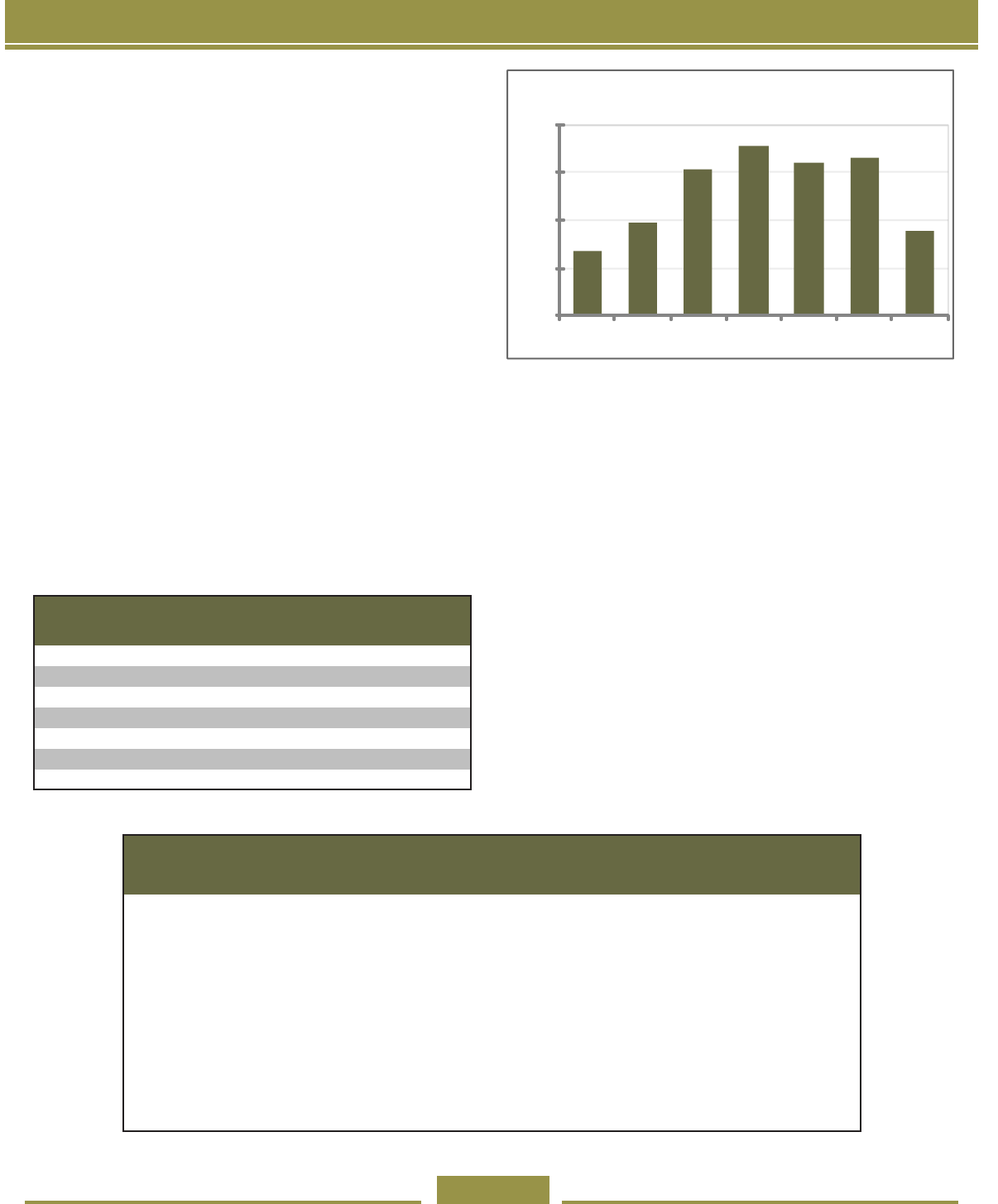
revenue.mt.gov
65
Overview of Corporate License Tax
Montana’s corporate license tax is a franchise tax levied
on C corporations for the “privilege of carrying on busi-
ness in this state” (15-31-101(3), MCA). A corporation
includes
an association, joint-stock company, common-law
trust or business trust that does business in an
organized capacity, all other corporations whether
created, organized, or existing under and pursu-
ant to the laws, agreements, or declarations of
trust of any state, country or the United States,
and any limited liability company, limited liabil-
ity partnership, partnership or other entity that is
treated as an association for federal income tax
purposes and that is not a disregarded entity (15-
31-101(1), MCA).
Every bank organized under the laws of Montana or an-
other state or under the United States and every savings
and loan organized under state law or United States law
is also subject to corporate license tax (15-31-101(4),
MCA).
67.72
98.21
153.68
177.50
160.34
166.36
87.91
0
50
100
150
200
FY2004
FY2005
FY2006
FY2007
FY2008
FY2009
FY2010
Millions
Corporation License Tax
Collections
FY 2004 $67,722,940
FY 2005 $98,213,717
FY 2006 $153,675,069
FY 2007 $177,503,707
FY 2008 $160,341,787
FY 2009 $166,357,514
FY 2010 $87,906,411
Corporation License Tax Collections
The table to the left and graph above show total corpo-
rate license tax collections for scal years 2004 through
2010. As a rule, corporate income tax collections in
Montana follow the general national economy. Total col-
lections in FY 2004 (which started on July 1, 2003) were
$67.7 million, increasing to $177.5 million in FY 2007
and declining to $87.9 million in FY 2010. Corporate
license taxes are deposited in the state general fund.
The table below provides a breakdown of revenues for
the last ve years by how they are collected and shows
refunds.
As can be seen from the table, estimated payments is
the largest source of corporate tax collections followed
by payments with returns. Average revenue over the
ve years was $39.556 million for payments with returns
and $112.215 million for estimated payments. Audit col-
lections have ranged from $10.8 million to $31.0 million
and averaged $20.2 million per year over the ve years.
Overview of Corporate License Tax
Payments
with
Returns
Estimated
Payments
Audit
Collections
1
Refunds
Total
Collections
FY 2006 44,163,925 109,666,297 10,830,003 (10,985,156) $153,675,069
FY 2007 31,625,075 141,658,487 26,814,040 (22,593,895) $177,503,707
FY 2008 39,473,130 127,433,439 16,874,522 (23,439,304) $160,341,787
FY 2009 45,608,755 109,585,667 31,041,454 (19,881,362) $166,354,514
FY 2010 36,909,143 72,732,614 15,380,337 (37,121,182) $87,900,911
Average 39,556,005 112,215,301 20,188,071 (22,804,180) 149,155,198
1 Includes penalties and interest as well as taxes collected
Corporation License Tax Collections, Refunds and Fees

revenue.mt.gov
66
Refunds averaged $22.8 million per year, but were as
low as $11.0 million in FY 2006, and as high as $37.1
million in FY 2010. Total collections averaged $149.155
million per year, but ranged between $87.9 million in FY
2010 up to $177.5 million in FY 2007.
Organizations exempt from the tax include corporations
or associations organized and operated exclusively for
religious, charitable, scientic, or educational purposes,
and whose income does not benet any stockholder or
individual. Other entities exempt from corporate license
tax include labor, agricultural or horticultural organiza-
tions; civic organizations operated exclusively for the
promotion of social welfare; clubs or corporations orga-
nized and operated exclusively for pleasure; recreation
or other nonprot purposes and who do not have any
income that benets any private stockholder or member;
and similar non-prot organizations. Unrelated business
taxable income, as dened by federal law, of exempt
organizations which creates more than $100 of federal
tax liability is taxable as corporate income in the same
manner as other taxable corporate income. In order
to receive treatment as exempt from state corporation
taxes, the corporation must prove it is in compliance
with all statutory conditions (15-31-102, MCA and ARM
42.23.103).
Research and development (R&D) rms organized to
engage in business for the rst time in Montana are not
subject to the corporate license tax for the rst ve years
of operation. In order to receive this tax treatment the
rm must make an application to the Department of Rev-
enue and be approved as meeting legislative require-
ments (15-31-103, MCA).
Regular or C Corporations 14,173
S Corporations 25,603
Total Corporations 39,776
Corporations Paying $50 Minimum Tax * 9,578
Corporations Paying More Than $50 Minimum Tax 4,595
Total Regular Corporations 14,173
Returns Filed in Tax Year 2010
* Includes corporations filing a tax return, but claiming zero taxable
income
Only C corporations pay corporate license taxes. Cor-
porations that elect to le as a subchapter S corporation
for federal tax purposes are also required to le as a
subchapter S corporation for Montana corporate license
tax purposes. Despite the ling requirement, subchapter
S corporations do not pay Montana corporate license
taxes. Instead the owners or shareholders of the S cor-
poration are subject to income tax on income channeled
through the S corporation to the owner or shareholder.
Then the owner/shareholder reports any taxable income
on their individual income tax form. S corporations are
discussed in the section on pass-through entities follow-
ing this section.
The table on the following page provides a distribution
by Montana tax liability of the 14,173 corporate returns
with a Montana tax liability led in scal year 2010.
Altogether the top 100 returns constituted nearly 80%
of total tax liability for the group and the top 500 returns
accounted for over 90% of total Montana tax liability for
the group. The other 13,675 returns accounted for only
8.0% of the total Montana tax liability.
The starting point for calculating Montana corporation
license tax is the corporation’s federal taxable income.
In order to determine net income taxable by Montana,
certain adjustments to federal taxable income must be
made. For example, municipal bond interest is taxable
and must be added to income. Montana also allows cer-
tain reductions to income, such as a portion of the cost
of energy conservation investments made in a building
used for the corporation’s business. Then after addi-
tions and reductions, income is apportioned to Montana
to produce Montana taxable income.
If the corporation conducts business that is taxable only
in Montana, then all of the net income from that busi-
ness is Montana taxable income. The tax is levied at
a rate of 6.75% on net income earned in Montana.
Multi-state corporations conducting business that is
taxable both in and outside the state are required to
apportion income to Montana based on an equally
weighted, three-factor apportionment formula.
Sales, property and payroll comprise the three fac-
tors used in the apportionment formula. The payroll
factor is the ratio of payroll paid in compensation
attributable to the production of business income
during the tax period in Montana to all payroll paid.
Similarly, the property factor is based on the ratio
of Montana property to all property and the sales
factor is based on the ratio of Montana sales to all
Overview of Corporate License Tax

revenue.mt.gov
67
Cumulative
Percent Percent of
Tax of Total Total
Regular Corporation Returns Number Liability Liability Liability
Top 100 returns 100 $91,509,931 77% 77%
Second 100 returns 100 8,794,798 7% 84%
Third 100 returns 100 4,428,006 4% 88%
Fourth 100 returns 100 2,694,906 2% 90%
Fifth 100 returns 100 1,741,511 1% 92%
All other returns 13,673 9,792,779 8% 100%
Total 14,173 $118,961,931 100% n/a
Corporate Returns Filed for Tax Year 2010
Distribution of Montana Tax Liability
Percent Cumulative
Montana Tax of Total Percent of Total
Regular Corporation Returns Number Liability Liability Liability
Top 100 returns 100 95,393,646$ 68.9% 68.9%
Second 100 returns 100 12,810,607 9.3% 78.2%
Third 100 returns 100 6,801,700 4.9% 83.1%
Fourth 100 returns 100 4,266,700 3.1% 86.2%
Fifth 100 returns 100 2,899,356 2.1% 88.3%
All other returns 13,853 16,225,449 11.7% 100.0%
Total 14,353 138,397,458$ 100.0% n/a
Regular Corporation Returns Filed in Fiscal Year 2008
Distribution of Montana Tax Liability
sales. The tax is normally levied at a rate of 6.75% on
net income apportioned to Montana, with exceptions
explained below.
Following is an example showing how a multi-state cor-
poration doing business in Montana would calculate its
Montana source income. The corporation, Company A,
has $1 million in payroll in Montana out of total payroll of
$10 million; $2 million of property in Montana out of total
property of $125 million; and sales in Montana of $4 mil-
lion out of total sales of $100 million during the tax year.
These facts result in an apportionment factor of
0.052. If this corporation had total taxable income
of $10,000,000, then its Montana taxable income is
$520,000 ($10 million times 0.052), and its state income
tax is $35,100 (before credits).
Montana is a worldwide, combined unitary state. A
business is unitary when the operations of that busi-
ness within the state depend on or contribute to the
operations of that business outside the state. However,
in Montana, corporations can elect to have only their
United States income included in the apportionment
process. Corporations taking this election, called
a “water’s edge” election, pay the tax at a rate of
7% instead of 6.75%. Multinational unitary cor-
porations wishing to le under the water’s edge
method are required to le a written election
within the rst 90 days of the tax period for which
the election is to become effective. The Depart-
ment of Revenue must approve the election
before the corporation uses it and the election is
binding for three consecutive taxable periods.
Corporations whose only activity in Montana
consists of making sales, and who do not own
or rent real estate or tangible personal property,
and whose annual gross volume of sales made
in Montana does not exceed $100,000 may elect
to pay an alternative tax equal to ½ of 1% of
gross sales.
There is a minimum tax of $50 for any corpora-
tion doing business in the state. The table on
returns led in Fiscal Year 2010 earlier in this
section shows that for those returns led in FY
2010 by corporations, the minimum tax was paid
on 9,578 returns, or almost 68%. If the corpora-
Overview of Corporate License Tax
Company A has:
Payroll in Montana Total Payroll Payroll Factor
$1,000,000 ÷ $10,000,000 = 0.1
Property in Montana Total Property Property Factor
$2,000,000 ÷ $125,000,000 = 0.016
Sales in Montana Total Sales Sales Factor
$4,000,000 ÷
$100,000,000 = 0.04
Equally weighted factor Add factors together 0.156
then divide by 3
÷ 3
which equals 0.052
So the apportionment factor is: 0.052
Example of apportionment factor calculation for a multi-state
corporation

revenue.mt.gov
68
tion has no property, sales, or payroll in the state during
the tax period, it is exempt from the minimum tax.
In Montana, net operating losses (NOL) of the corpora-
tion may be carried back for a period of three years and
used to reduce prior year income, and may be carried
forward for a period of seven years to reduce income
in those future years. Until recently, federal tax rules
allowed NOLs to be carried back two years and then
forward for up to 20 years (corporations can also vol-
untarily elect to just carry forward losses for up to 20
years). However, in November 2009, H.R. 3548, the
“Worker, Homeownership, and Business Assistance Act
of 2009”, become law. This act increases the allowable
carryback period for applicable net operating losses at
the federal level for most corporations from 2 years to 3,
4, or 5 years. An applicable NOL means the taxpayer’s
NOL for any tax year ending after Dec. 31, 2007, and
beginning before Jan. 1, 2010.
The table below provides a comparison of Montana
treatment of net operating loss deductions versus other
states in the region. Like Montana, Utah provides a
three year carryback of net operating losses, but has a
limit of $1 million. Utah allows losses to be carried for-
ward up to 15 years versus 7 years for Montana. Idaho
allows losses to be carried back against income for up to
2 years, but limits carryback losses to $100,000; Idaho
allows carryforward of losses for up to 20 years. Ari-
zona, Colorado, North Dakota and Oregon allow carry-
State Carryback/Carryforward periods
Arizona 0 back, 5 forward
Colorado 0 back, 20 forward
Idaho
Montana 3 back, 7 forward
North Dakota 0 back, 20 forward
Oregon 0 back, 15 forward
Utah 3 back (limited to $1 million), 15 forward
Nevada, Washington and Wyoming do not have a corporate income tax.
2 back ($100,000 limit), 20 forward,
or 0 back, 20 forward
Comparison with Other States in Region with a Corporate
Income Tax
Net Operating Loss Deductions
forward of losses for 5 years, 20 years, 20 years and 15
years, respectively, and do not allow carryback of loss
deductions.
The table on the next page provides a comparison of all
states with a corporate income tax and what they allow
in terms of carrying net operating losses backward and
forward. All states with a corporate income tax allow
some form of carryforward of losses, from ve to twenty
years, but many do not allow carryback of net operating
losses.
Overview of Corporate License Tax

revenue.mt.gov
69
5 years
forward
7 years
forward
10 years
forward
12 years
forward
15 years
forward
20 years
forward
Arizona
New Jersey
Kansas
Illinois
Alabama California
Arkansas Michigan
Minnesota
Colorado
Massachusetts
New Hampshire 3/
North Carolina
Connecticut
Nebraska
Vermont Oregon
District of Columbia
New Mexico
Tennessee
Florida
Rhode Island
Wisconsin
Iowa
Texas Kentucky
Maine
North Dakota
Ohio
Pennsylvania 5/
South Carolina
Alaska
Delaware 1/
Georgia
Hawaii
Idaho 2/
Indiana
Maryland
Mississippi
Missouri
New York 4/
Virginia
West Virginia 7/
Montana
Louisiana
Utah 6/
Source: 2010 State Tax Handbook , CCH, 2009.
1/ Delaware has a $30,000 limits on carrybacks.
2/ Idaho has a $100,000 limit on carrybacks.
3/ New Hampshire limits carryforward of losses to $1 million.
4/ New York has a limit of the first $10,000 of loss on carrybacks.
6/ Utah has a $1 million limit on carrybacks.
7/ West Virginia limits carrybacks to $300,000.
States with Corporate Taxes
Allowed Carrybacks and Carryforward Periods for Net Operating Losses
0 years
back
2 years
back
Allowed years of carryforward
Allowed
years of
carryback
3 years
back
5
/ Pennsylvania has a limit of $3 million or 15% of taxable income for tax year 2009, and $3 million or 20% of taxable
income for tax year 2010 on carryforward.
Overview of Corporate License Tax
Thirty one states do not allow carryback of net operating
losses, but do allow carryforward of losses, from 5 years
up to 20 years. Twelve states allow the same carryfor-
ward and carryback periods as federal tax law has his-
torically allowed (2 back and 20 forward). Three states
- Montana, Utah and Louisiana – allow corporations with
net operating losses to carry back these losses against
the three prior years of income.

revenue.mt.gov
70
Credit
Number
of
Credits
Total Credit
Amounts
Number
of
Credits
Total Credit
Amounts
Contractors Gross Receipts Tax Credit 91 1,692,954 72 487,413
Charitable Endowment Credit 18 54,516 29 103,189
Montana Recycling Credit * 70,936 * 25,937
Credit for Increasing Research Activities 22 588,068 12 82,965
Credit for Contribution to MT University or Private College 31 6,714 19 3,636
Montana Capital Company Credit 0 0 0 0
Health Insurance for Uninsured Montanans Credit 86 65,632 61 43,400
Credit for Alternative Fuel Motor Vehicle Conversion 0 0 * 6,000
Alternative Energy Production Credit * 15,094 * 50
Dependent Care Assistance Credit 0 0 0 0
New/Expanded Industry Credit 0 0 0 0
Historical Building Credit 0 0 0 0
Infrastructure Users Fee Credit * 541,522 * 431,692
Mineral Exploration Incentive Credit * 1,361 * 25
Interest Differential Credit 0 0 0 0
Film Production Credit * 16,583 0 0
Biodiesel Blending and Storage Credit 0 0 0 0
Oilseed Crushing and Biodiesel Production Credit 0 0 0 0
Geothermal System Credit 0 0 0 0
Insure Montana Credit 164 1,009,331 155 880,874
Empowerment Zone Credit 0 0 0 0
Total Credits 427 4,062,711 358 2,065,181
Some of the above credits are claimed on returns that have not been audited yet. The amount of credit claimed
may change once these returns are audited. In addition, some of the above numbers represent a carryback of some
credits claimed on amended returns received during the fiscal year.
* Indicates that credits were claimed on fewer than 10 returns.
Montana Corporation Tax Credits
--- Fiscal Year 2009 ---
--- Fiscal Year 2010 ---
Overview of Corporate License Tax
Credits
As with individual income tax, corporations with expen-
ditures that qualify can claim tax credits. The following
table shows what credits have been claimed in the last
two scal years and the number of corporations claiming
those credits.

revenue.mt.gov
71
Estimated Payments
Companies with a tax liability of $5,000 or more have to
make quarterly estimated payments. Tax returns for tax-
payers using a calendar year as their scal year are due
May 15
th
. Tax returns for taxpayers using another period
as their scal year are due the 15
th
day of the fth month
after close of the taxable year. Taxpayers must use
the same tax period they used on the federal tax return.
Automatic extensions are allowed for up to six months
following the prescribed ling date.
Penalties and Interest
Corporations who do not pay a tax when due may be
assessed a late payment penalty of 1.2% per month on
the unpaid tax, up to a maximum penalty of 12% of the
tax due. Interest on unpaid tax accrues at a rate of 12%
per year, or at 1% per month or fraction of a month on
Estimated Payments, Penalties and Interest

revenue.mt.gov
72
the unpaid tax.
Comparison of Corporate Tax Rate with Other States
Forty-four states and the District of Columbia have a
tax on corporate income. The table to the left uses data
from the Federation of Tax Administrators (as of January
1, 2010) to show the maximum rates for states that have
a corporate tax. These go from 12% down to 4%.
A number of states have a graduated income tax which
is indicated by an asterisk next to the state.
Nevada, Washington and Wyoming do not have state in-
come corporation taxes. Texas imposes a franchise tax
based on gross revenues and South Dakota has a tax
on nancial institutions only. Ohio has adopted a com-
mercial activity tax which is a tax on gross receipts.
The table below provides a comparison of Montana’s
tax rate with the maximum tax rate for other states in
the region that have a corporate income tax. As noted
before, Nevada, Washington and Wyoming do not have
corporate income taxes.
Rank State
Maximum
Tax Rate
1 Oregon 7.90%
2 Idaho 7.60%
3 Arizona 6.97%
4 Montana 6.75%
5 North Dakota * 6.40%
6 Utah 5.00%
7 Nevada 0.00%
8 Washington 0.00%
9 Wyoming 0.00%
Maximum Corporate Tax Rate
Regional Ranking - Tax Year
2010
Comparison of State Corporate Tax Rates
Rank State
Maximum
Tax Rate
1 Iowa * 12.00%
2 Pennsylvania 9.99%
3 District of Columbia 9.975%
4 Minnesota 9.80%
5 Alaska * 9.40%
6 New Jersey 9.00%
6 Rhode Island 9.00%
8 Maine * 8.93%
9 California 8.84%
10 Massachusetts 8.75%
11 Delaware 8.70%
12 Indiana 8.50%
12 New Hampshire 8.50%
12 West Virginia 8.50%
12 Vermont * 8.50%
16 Maryland 8.25%
17 Louisiana * 8.00%
18 Wisconsin 7.90%
18 Oregon 7.90%
20 Nebraska * 7.81%
21 Idaho 7.60%
21 New Mexico * 7.60%
23 Connecticut 7.50%
24 Illinois 7.30%
25 New York 7.10%
26 Arizona 6.968%
27 North Carolina 6.90%
28
Montana 6.75%
29 Alabama 6.50%
29 Arkansas * 6.50%
29 Tennessee 6.50%
32 North Dakota * 6.40%
32 Hawaii * 6.40%
34 Missouri 6.25%
35 Kentucky * 6.00%
35 Georgia 6.00%
35 Oklahoma 6.00%
35 Virginia 6.00%
39 Florida 5.50%
40 Mississippi * 5.00%
40 South Carolina 5.00%
40 Utah 5.00%
43 Michigan 4.95%
44 Colorado 4.63%
45 Kansas 4.00%
As of Jan. 1, 2010. Federation of Tax Administrators
Maximum Corporate Tax Rate By State
From Highest to Lowest - Tax Year 2010

revenue.mt.gov
73
Business Structure and Taxation
States offer businesses a variety of options for legal
organization. Different business forms give the owners
different levels of liability for the business’ actions and
debts, different structures for making business deci-
sions, and different levels of access to capital markets.
For tax purposes, each of these business structures falls
into one of three categories: sole proprietor businesses,
pass-through entities, and C corporations.
Income from a sole-proprietor business is reported
on the owner’s tax return and is taxed as the owner’s
income. A pass-through entity les an informational
return showing its income and how the income is di-
vided between the owners. The owners are taxed on
their shares of the business’ income, whether or not the
income is distributed to them, but the business is not
taxed. Pass-through entities can be either S corpora-
tions or partnerships, and somewhat different accounting
procedures apply to how net income can be distributed
between owners. A C corporation les a return and is
taxed on its net income. The owners are taxed on divi-
dends the business pays them.
In many cases, a rm’s legal business structure de-
termines its tax treatment, but some rms can choose
between two or more options for tax treatment.
Pass-through entities include partnerships; S corpora-
tions; limited liability companies (LLCs); real estate
investment trusts (REITS); regulated investment compa-
nies (RICs), better known as mutual funds; and others.
Partnerships are an old and familiar business entity to
many, but S corporations are less so. The S corporation
rules were enacted in 1958 and permit a corporation
and its shareholders to elect to be taxed at one level.
However, S corporation status has limitations relative to
C corporations. S corporations can have no more than
100 shareholders, although family members are treated
as one shareholder. Only one class of stock is allowed,
and ownership is limited to U.S. taxpayers or entities.
The most common type of pass-through entity today
is the limited liability company, or LLC. The rst LLC
statute was enacted in Wyoming in 1977, and now all
states and the District of Columbia have LLC statutes.
For federal tax purposes, LLCs are generally treated
as partnerships, although LLCs can elect to be treated
as S corporations. A single member LLC can elect to
be treated as a sole proprietorship if the single member
is an individual; if the single member is a corporation,
then the LLC is treated as a division of a corporation. In
both cases, the LLC’s income is reported on the owner’s
return and the LLC does not le a separate return. In
Montana an entity generally has the same status as it
has for federal tax purposes. For example, if a business
led as an S corporation at the federal level, it must le
as an S corporation at the state level.
Partnerships and S corporations are “traditional” pass-
through entities. Their income, deductions, and credits
pass-through to the owners and the owners report the
items on their tax returns. Although they are traditional
corporations, REITs and RICs are effectively pass-
through entities because they are allowed a deduction
for dividends paid to shareholders. Therefore, usually
the REIT or RIC pays no tax and the shareholders are
only taxed on their REIT or RIC income. A limited liabil-
ity company has no independent tax status. Instead it is
taxed as either an S corporation, or a partnership or a C
corporation; if it has only one owner, the LLC’s existence
is disregarded for most tax purposes.
The following table shows characteristics of businesses
falling into each of the four business tax categories.
Overview of Pass-Through Entities
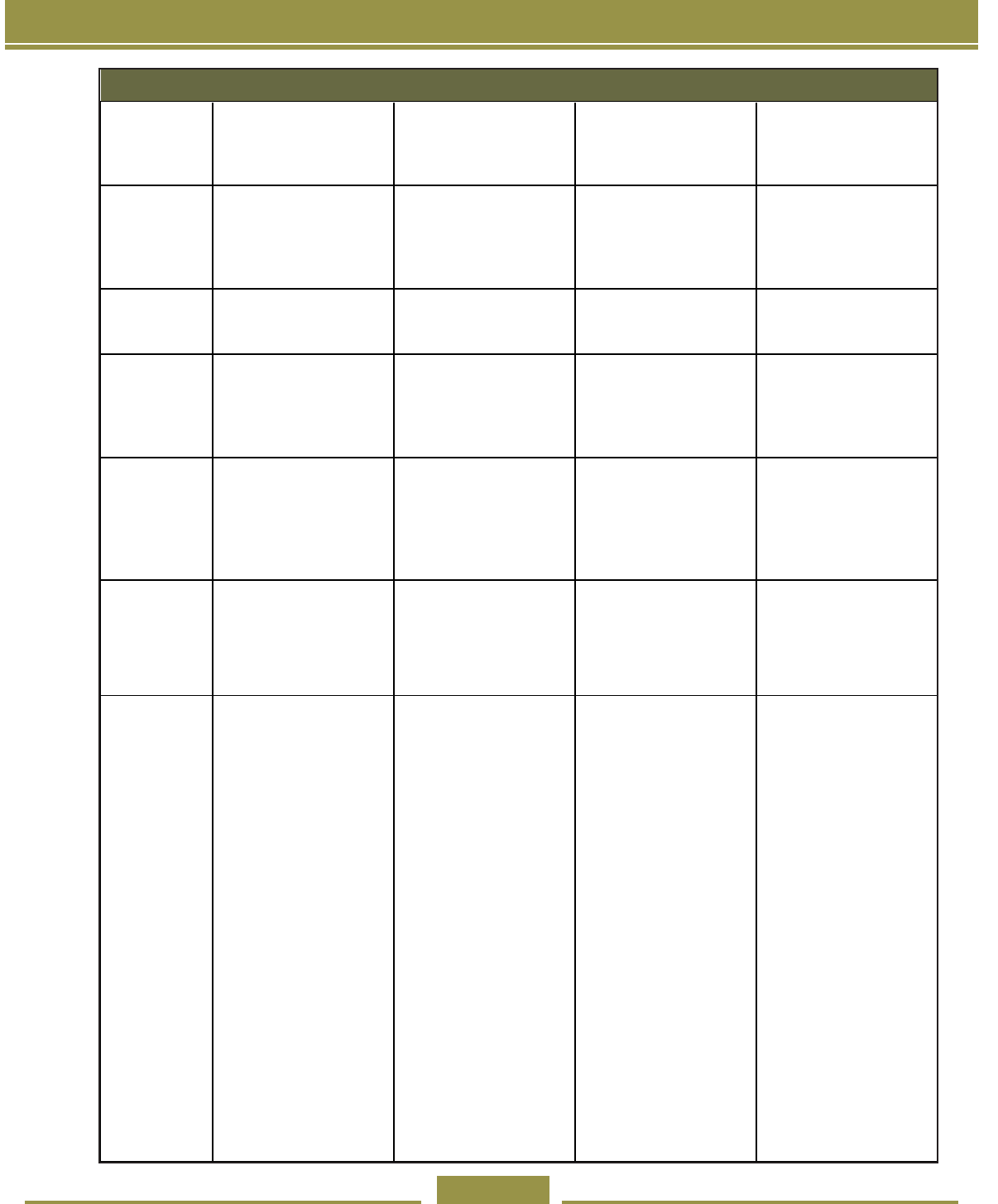
revenue.mt.gov
74
Overview of Pass-Through Entities
Individual
Pass-Through Entity
(S - Corporation or
Partnership)
C - Corporation Disregarded Entity
Legal
Business
Organization
Informal
Partnership, Limited
Liability Company (LLC),
Corporation, Limited
Partnership, etc.
Corporation Single Member LLC, etc.
May be
Owned By
One Individual or
Married Couple
Individuals or Other
Business Entities
Individuals or Other
Business Entities
Individuals or Other
Business Entities
Business
Income and
Owner's
Income
The business' net
income is all attributed to
the owner.
The business calculates
its net income, and this
income is attributed to
the owners.
The business calculates
its net income. Owners'
income is dividends
received.
The business' net
income is all attributed to
the owner.
Distribution of
Income to
Owners
The business' net
income is the owner's
income from the
business.
Distributions to owners
need not equal business'
current net income.
Business pays dividends
to shareholders.
Dividends need not
equal business' current
net income.
Distribution to owner
need not equal
business's current net
income.
Taxation
Owner reports income
from business as part of
income subject to
individual income tax
No tax at the entity level.
Owners responsible for
tax on income attributed
to them.
Business' net income
subject to corporation
license tax. Owners
taxed on dividends.
Entity is ignored.
Business' income is
taxed as owner's
income.
Reporting
The business' receipts
and costs are reported
on Schedule C of the
owner's federal tax
return (Schedule F for a
farm), and net income is
reported on Line 12 for
Business Income or
Loss (Line 18 for Farm
Income or Loss) of the
state return.
The business files
federal and state
information returns.
Federal return shows
receipts and costs and
both show income,
deductions, and credits
passed through to
owners. Owners report
their share of net
business income from
the pass-through as
business income
(Schedule E and Line 17
of the tax return for
individuals). If the
business receives
dividends, capital gains,
or other passive income,
owners report those
separately on the
appropriate return lines.
The business files
federal and state
corporate income tax
returns and a federal
information report, Form
1099-DIV, for each
owner who received at
least $10 of dividends.
Owners report dividends
received on their tax
returns (Line 9 of state
return for individuals).
Income is reported on
owner's return.
Business Structure and Taxation
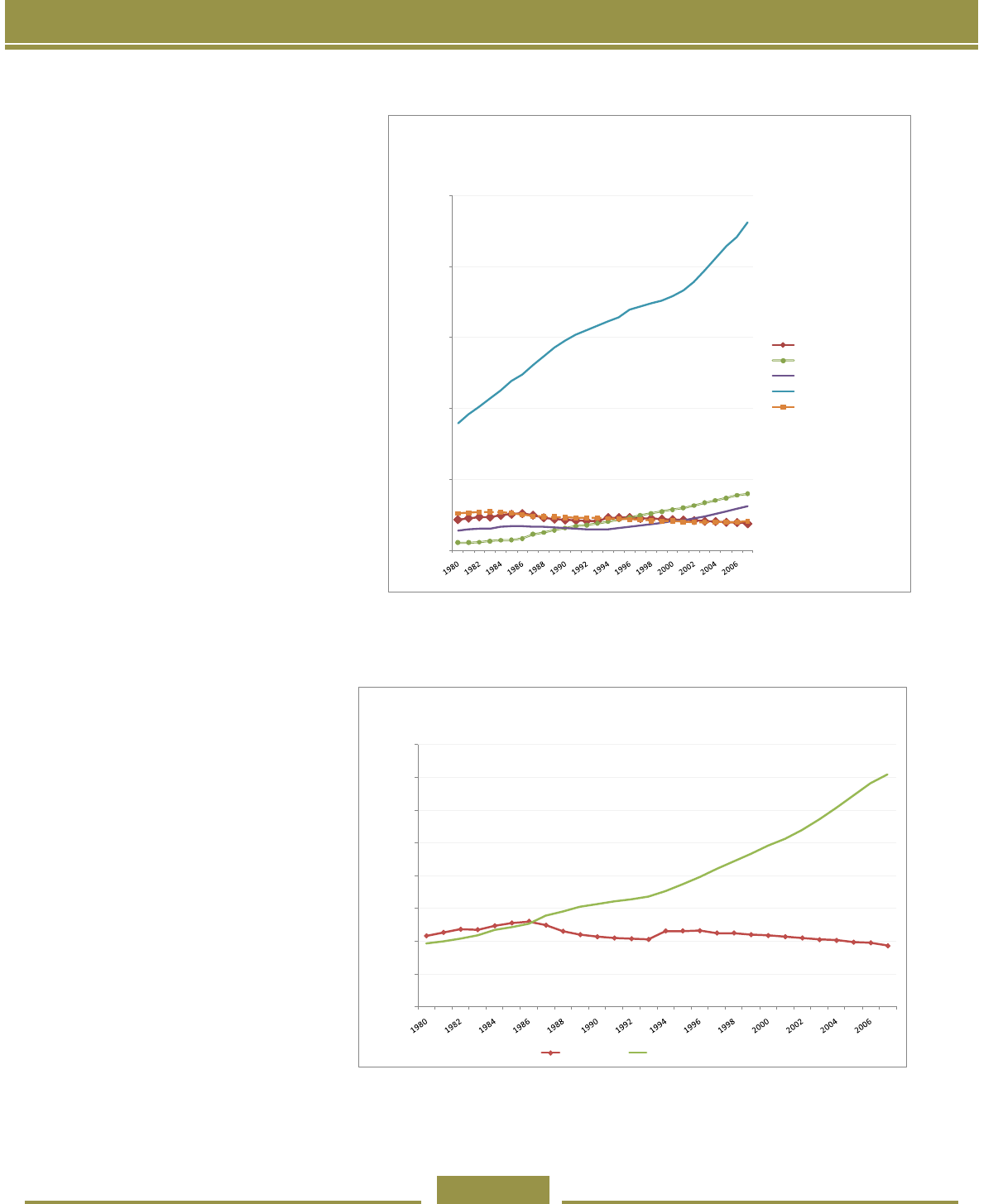
revenue.mt.gov
75
Growth of Pass-Through Entities
Increasingly, in Montana and nation-
wide, business and investment activities
are being conducted by pass-through
entities. The graph on the top right
shows the number of returns led with
the IRS by business types from 1980
through 2007. As can be seen from the
graph, non-farm sole proprietorships are
the most common type of business en-
tity in the U.S., based upon the number
of returns led. The number of non-farm
sole proprietorships has been grow-
ing steadily over the time period, going
from 9 million in 1980 up to 23 million in
2007, an average annual growth rate of
almost 3.6%. The number of S corpora-
tions has also grown very rapidly dur-
ing the same time – up from 545,000 in
1980 to almost 4 million in 2007, an an-
nual growth rate of 7.6%. Partnerships
grew more slowly – increasing from 1.4
million in 1980 to 3.1 million in 2007.
During the same period, both the num-
ber of corporation returns and farm re-
turns (based upon schedule F) declined,
with corporations going from 2.2 million
in 1980 to 1.9 million in 2007 and farms
(ling schedule F) going from 2.6
million in 1980 to 2.0 million in 2007.
However, it should be noted that
farms can also operate as partner-
ships or be incorporated as S or C
corporations. Although they are not
shown on the graph, the number of
REIT and RIC returns also grew over
this time period, going from 1,691
returns in 1980 to 13,724 returns in
2007.
The graph on the bottom left is
based upon the same data as in
the graph above, but compares
the growth in the number of pass-
through entities (partnerships and S
corporations) to that of C corpora-
tions.
Sole proprietorships, just as the
name suggests, are businesses with
a single owner and are a familiar
Growth of Pass-Through Entities
-
1,000,000
2,000,000
3,000,000
4,000,000
5,000,000
6,000,000
7,000,000
8,000,000
Number of C Corporation Returns Compared to the Sum of S
Corporation and Partnership Returns, 1980-2007
C corporations
Pass-through Entities
-
5,000,000
10,000,000
15,000,000
20,000,000
25,000,000
Number of Different Types of Business Returns
(IRS Statistics of Income)
C corporations
S corporations
Partnerships
Non-farm sole proprietorships
Farms (Schedule F)

revenue.mt.gov
76
sight on many main streets in Montana. The Depart-
ment of Commerce, in its December 2007 publication,
Economic and Demographic Analysis of Montana,
reports that over 60% of Montana businesses are sole
proprietorships without any employees. The owner of
a sole proprietorship will record his or her income on
the state individual income tax form, Form 2 on line 12,
as Business Income (or loss), and will attach a copy of
federal Schedule C (or C-EZ), which has been led with
the taxpayer’s federal tax return. If the business owner
has a farm or ranch operation that is operated as a sole
proprietorship, the taxpayer reports his or her income on
line 18 of the state individual income tax form (Farm In-
come or (loss)), and attaches a copy of federal Sched-
ule F, which has been led with the taxpayer’s federal
form.
One thing to note is that C corporations in Montana vary
greatly in size – there are large or very large businesses
that engage in operations across many states and even
countries, but there are also smaller rms that engage
in agricultural operations, main street businesses, or
regional operations. Some of these may have been
incorporated before S corporations were available or
well understood; others may have been incorporated as
C corporations in order to be better positioned to ac-
cess capital markets or otherwise need one or more of
the advantages that C corporation status provides. For
example, S corporation shareholders pay tax on the
entity’s income, whether or not distributed. C corpora-
tion shareholders pay tax only on dividends distributed
to them. It can be advantageous to a company that is
growing to retain its earnings inside the corporation;
however, for S corporation shareholders, this means
that they may be taxed on income, but are not actually
receiving any of that money.
Growth of Pass-Through Entities

revenue.mt.gov
77
Montana Multi-State Montana Multi-State
Returns 21,607 3,996 16,508 3,424
Income Items
Salaries and Other Fixed Payments to Owners $0.0 $0.0 $247.4 $26.3
Ordinary Business Income $1,066.5 $368.4 $549.1 $174.3
Rental Income
Real Estate $24.6 $5.4 -$105.5 -$1.1
Other -$5.8 $6.0 -$4.2 -$2.4
Interest $47.2 $13.0 $958.6 $31.0
Dividends $10.6 $4.5 $344.4 $8.6
Royalties $7.4 $8.1 $88.8 $19.9
Capital Gains $80.4 -$56.8 $447.2 $21.4
Gains from the Sale of Business Property $134.3 $376.4 $228.8 $108.0
Other Income $16.4
$1.6 -$83.0 $14.9
Total $1,381.6 $726.7 $2,671.6 $401.0
Montana Additions to Federal Income
Interest on Non-Montana Municipal Bonds $1.3 $2.4 $3.7 $0.4
State and Local Income Taxes $3.4 $12.2 $4.1 $0.5
Other $12.3
$1.5 $62.9 $12.1
Total $17.0 $16.1 $70.6 $13.0
Montana Subtractions from Federal Income
Interest on Federal Bonds $22.2 $0.4 $17.2 $0.3
Purchases of Recycled Materials $0.2 $0.0 $0.0 $0.1
Other $10.6
$14.4 $96.6 $14.9
Total $33.0 $14.8 $113.8 $15.3
Deductions
Expensing of Capital Purchases $162.9 $54.2 $455.3 $174.2
Contributions $20.4 $6.6 $20.4 $1.8
Intest on Funds Borrowed to Make Investments $5.9 $0.7 $391.5 $2.5
Other $9.7
$26.6 $913.2 $24.4
Total $198.8 $88.2 $1,780.4 $202.9
Total Net Montana Source Income $1,166.8 $639.9 $848.0 $195.7
S Corporations Partnerships
Montana-Source Income Passed Through To Owners, 2008
($ million)
Income, Deductions and Credits Reported on Mon-
tana Pass-Through Returns
Pass-through entities that are classied as S corpora-
tions and partnerships for tax purposes are required to
le information returns each year. These returns show
the total amounts various types of income, deductions,
and credits allocated to the owners and the amount
distributed to each owner. Pass-through entities that
operate in more than one state apportion part of their
income to Montana using the same apportionment
formula as corporations. The following table shows
Montana-source income allocated to owners on 2008
pass-through returns.
Pass-Through Entity Returns

revenue.mt.gov
78
Net income from the pass-through’s business operations
is usually allocated to the owners as ordinary busi-
ness income. Individual owners report this income on
Schedule E of their federal tax returns and then income
from Schedule E is reported on Line 17 of their Montana
Form 2. Income the pass-through receives from passive
investments or the sale of assets is allocated to the own-
ers as that type of income, and owners report it on the
corresponding line of their tax returns. For example, if a
pass-through receives $1,000 of interest and allocates it
equally to its ten owners, who are Montana individuals,
each owner should report the $100 of interest on Line 8a
of their Form 2.
Montana Multi-State Montana Multi-State
Dependent Care Credit $0 $0 $0 $0
College Contribution Credit $12,644 $955 $1,275 $609
Insurance for Uninsured Montanans Credit $250,574 $6,040 $30,553 $0
Credit for Investment in Recycling Equipment $340,158 $166,111 $79,117 $40,954
Alternative Energy Production Credit $0 $0 $0 *
Contractors' Gross Receipts Credit $17,334 $0 $18,510 $9,703
Alternative Fuel Credit $3,245 $0 $0 $0
Infrastructure Users Fee Credit $0 $0 $35,547 $0
Charitable Endowment Contribution Credit $49,443 $6,640 $15,298 $4,600
Historic Building Preservation Credit $0 $1,346 $0 $0
Increased Research Activity Credit $95,108 $97,501 $2,253 $6,828
Empowerment Zone Credit $0 $0 $0 $0
Film Production Credit $23,891 $12,062 $0 $14,328
Biodiesel Blending Credit $0 $0 $0 $0
Oilseed Crushing Credit $0 $0 $3,455 $0
Geothermal Heating System Credit $0 $0 $3,000 $0
Insure Montana Credit $1,280,450 $45,335 $231,824 $14,462
Temporary Emergency Lodging Credit $0
$0 $0 $0
Total $2,072,847 $335,990 $420,832 $91,484
Tax Credits Passed Through To Owners, 2008
S Corporations Partnerships
When a pass-through does something that is eligible for
a tax credit, the credit is usually allocated to the owners
who claim their share of the credit on their tax returns.
Owners may or may not be able to claim the credit. For
example, some credits can only be claimed by individu-
als, and some owners may have no taxable income to
claim a credit against.
The following table shows credits reported on pass-
through returns for 2008 as passed through to owners.
Credits actually claimed by owners are included in the
credits claimed for individual income tax and corpora-
Pass-Through Entity Returns

revenue.mt.gov
79
tion license tax.The table below shows the numbers of
reported owners who are individuals and business enti-
ties and who are located in Montana or in other states.
It also shows the total income allocated to each group of
owners.
Most of the owners of pass-through entities doing busi-
ness only in Montana are Montana individuals. Most
of the owners of multi-state pass-throughs doing busi-
ness in Montana are non-Montana individuals, but about
one-third of the partners in multi-state partnerships are
non-Montana business entities.
Owners of pass-through entities taxed as partnerships
may be either individuals or business entities. While
Entities % Entities %
1 11,358 45.9% 153 0.8%
2 to 3 10,880 43.9% 13,523 70.5%
4 to 8 2,033 8.2% 4,145 21.6%
9 to 20 359 1.5% 852 4.4%
Over 20 128
0.5% 504 2.6%
Total 24,758 19,177
Pass-Through Entities - Number of Owners
S Corporations Partnerships
Number of Reported
Owners
shares of S corporations can only be owned by individu-
als, some types of pass-through entities that can be
owned by other business entities can elect to be treated
as S corporations for tax purposes.
Most pass-through entities have a small number of own-
ers. As the following table shows, more than 90% of
pass-through entities have eight or fewer owners.
About four-fths of entities with more than 20 owners are
partnerships. S corporations are limited to 100 share-
holders, while there are types of partnerships with one
active partner who runs the business and many partners
who are passive investors.
Pass-Through Entity Returns
Type of Owner Owners Income Owners Income Owners Income Owners Income
Resident Individuals 34,875 $872.5 1,454 $238.5 34,977 $335.1 1,366 $28.6
Non-Resident Individuals 3,884 $51.8 12,468 $421.4 11,785 -$67.5 24,810 -$32.2
Montana Business Entities 405 $22.0 23 $21.7 4,094 $183.4 247 $39.0
Non-Montana Business Entities 248
$128.2 1,479 $16.7 4,482 -$109.7 16,670 $80.3
Total 39,412 $1,074.5 15,424 $698.3 55,338 $341.3 43,093 $115.7
Income by Type of Owner 2008
($ million)
Partnerships
S Corporations
Montana
Multi-State
Montana
Multi-State
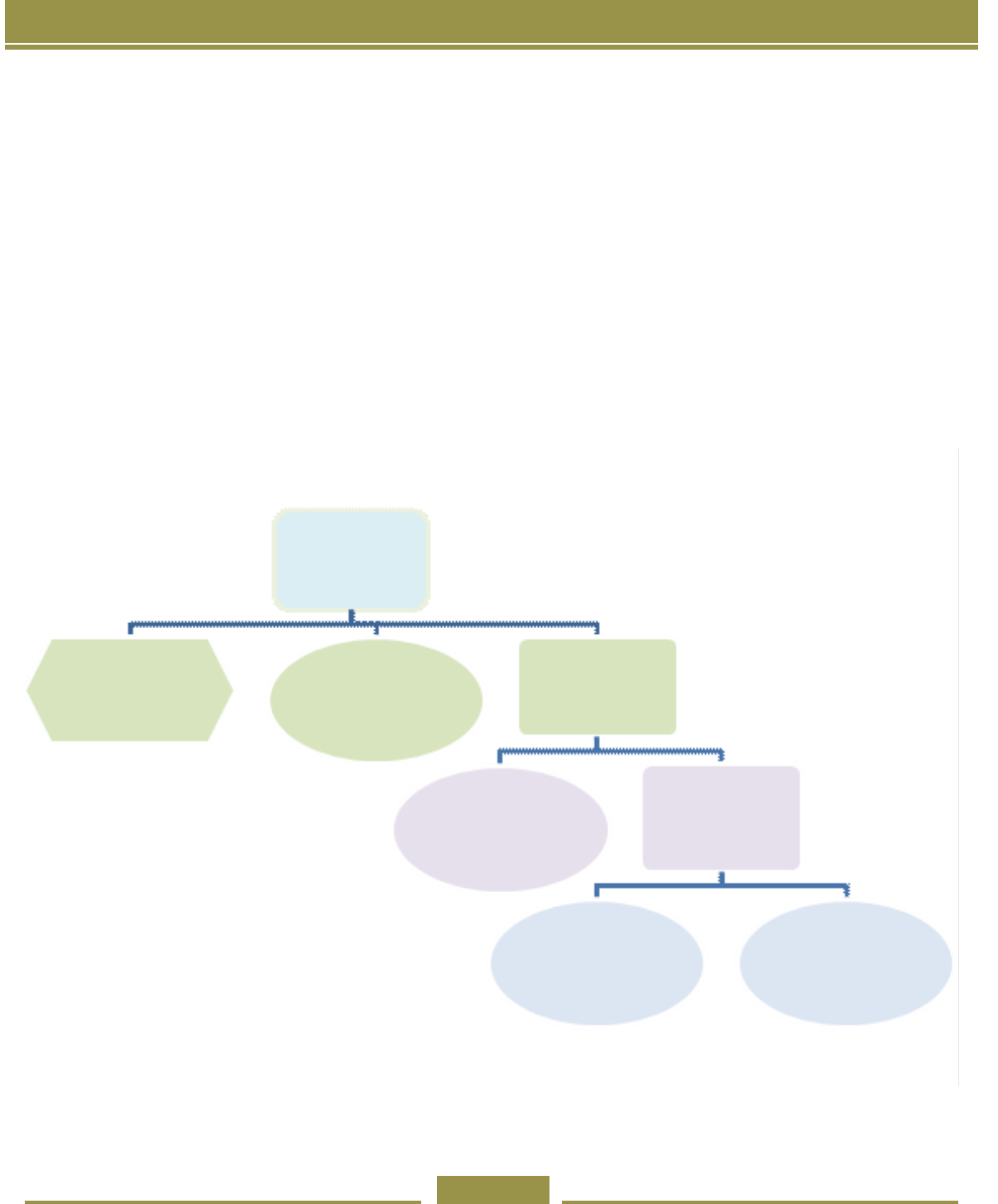
revenue.mt.gov
80
Tiered Ownership and Tax Administration
A pass-through entity is not itself taxed. Instead, its
income and expenses are reported in the tax returns of
the owners. These owners can be corporations, individ-
uals, other pass-through entities, or a mix of all of them.
When pass-through entities are owned by other pass-
through entities, a “tiered” business structure is created.
Tiered structures add complexity to tax administra-
tion because the “taxpayer” may be quite remote from
the entity doing business in the state. Because pass-
through entities can have either corporate, individual
and/or another pass-through entity as a partner, owner
or shareholder, they represent a challenge for tax ad-
ministration. The following diagram shows how complex
even a comparatively small set of ownership/partnership
Tax Administration of Pass-Through Entities
Tier 2 - Individual owner
receives $200 in income
from Tier 1 LLC
Tier 1 - LLC with
$1,000 in income
to be distributed to
owners
Tier 2 - Corporation
owner receives $100 in
income from Tier 1 LLC
Tier 2 - Individual owner
receives $200 in income
from Tier 1 LLC
Tier 2 - Limited
partnership receives
$700 in income from
Tier 1 LLC
Tier 3 - S corporations
receives $480 in
income from Tier 2
limited partnership
Tier 3 - Individual
owner receives $220 in
income from the Tier 2
partnership
Tier 4 - Individual owner
receives $240 in income
from Tier 3 S corporation
Tier 4 - Individual owner
receives $240 in income
from Tier 3 S corporation
Sources:
Joint Committee on Taxation, Tax Reform: Selected Federal Tax Issues Relating to Small Business and
Choice of Entity (JCX-48-08), June 4, 2008.
Internal Revenue Service, Statistics of Income.
relationships can become.
A pass-through entity with Montana source income must
le an informational return. If this entity has a partner,
shareholder, member or other owner who is a non-
resident individual or a foreign C corporation, the pass-
through entity is also required to:
(1) le with the state an agreement with the in
dividual nonresident to timely le a Montana
return, pay taxes and be subject to personal ju
risdiction of the state with respect to the income
from the pass-through, or
(2) le a composite return, or
(3) remit tax on their shareholders behalf.
If there is a second tier pass-through owner, either a
composite return has to be led or withholding (un-
less that second tier pass-through proves that all of its
shareholders are accounted for on Montana returns. If
an agreement is not met as led, the pass-through entity
must in all subsequent tax years withhold the appropri-
ate amount and remit the tax payment directly to the
state (15-31-1113, MCA).
